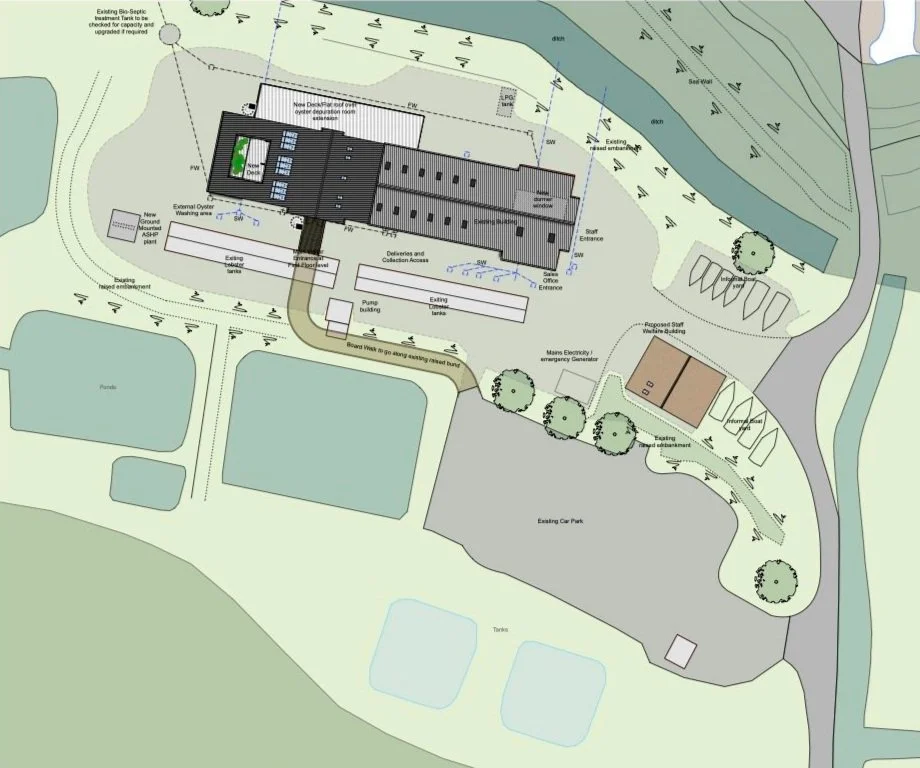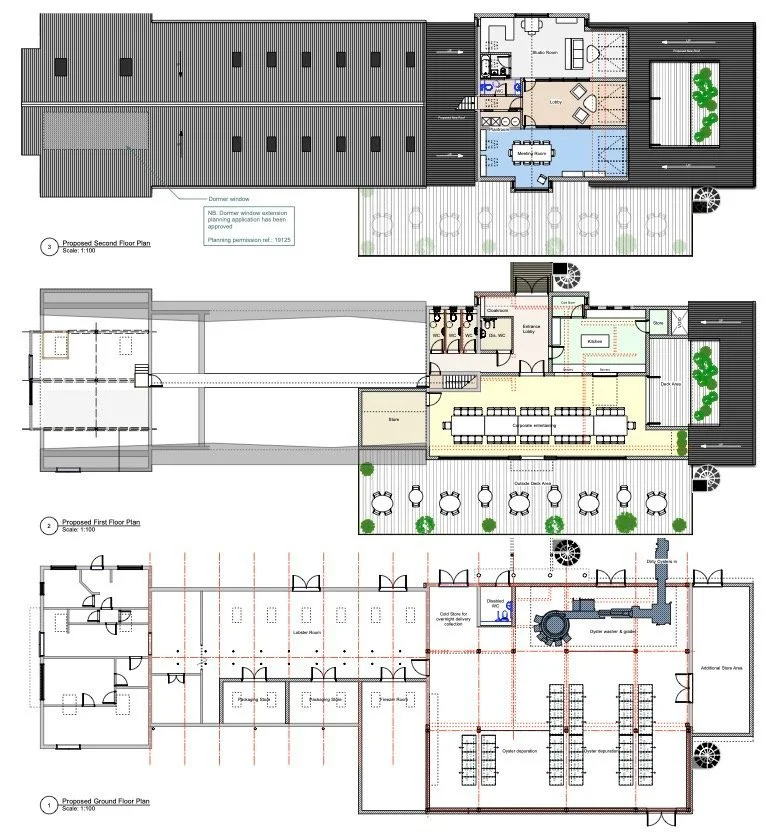Oyster Fishery
Colchester Oyster Fishery, East Mersea, Essex Extension and Alteration to Existing
Appointment : RIBA stage 0-4
Colchester Oyster Fishery, was established on the Pyefleet Quay East Mersea around 50 years ago. The site is SSSI designated and is bounded by other protected coastal marshland and estuarine sites.
The building has evolved to respond to business growth and supports the local economy. The business supplies growing local and national demand for supply of both the ‘Native Colchester Oyster’ and it’s non- native counterpart along with the processing and sale of other local and imported shellfish and crustaceans. As part of the growth, care and sustainability of the business the Fishery actively engages and supports on-going local and national estuarine and marine conservation projects in partnership with The University of Essex and environmental NGO’s eg.’The Essex Native Oyster Restoration Initiative’ ENORI.
Having suffered from significant fire damage, during the summer of 2019, the oyster fishery was forced to operate from temporary accommodation whilst an insurance assessment was undertaken. In parallel with this process the applicant appointed Inkpen Downie Architects, as original architects for the principal building, to explore proposals for reinstating the building with an extension to the ground floor to accommodate a modern, expanded, processing facility and also refurbish the upper floors to serve the business in the long- term.
The design features an accessible, timber, pedestrian bridge between the car park and the new first floor space. This enables separation of visitors, whilst maintaining their visual connection with the operations. The first-floor offers a flexible well-equipped space, including kitchen, new WC’s and deck with panoramic views of the Pyefleet – perfect for showcasing conservation work, hosting events and corporate entertaining.
The aesthetic aspiration was to extend and modernise the facility whilst retaining the character, spirit of the original building so that the building sits almost unchanged in the sensitive character of the landscape.


